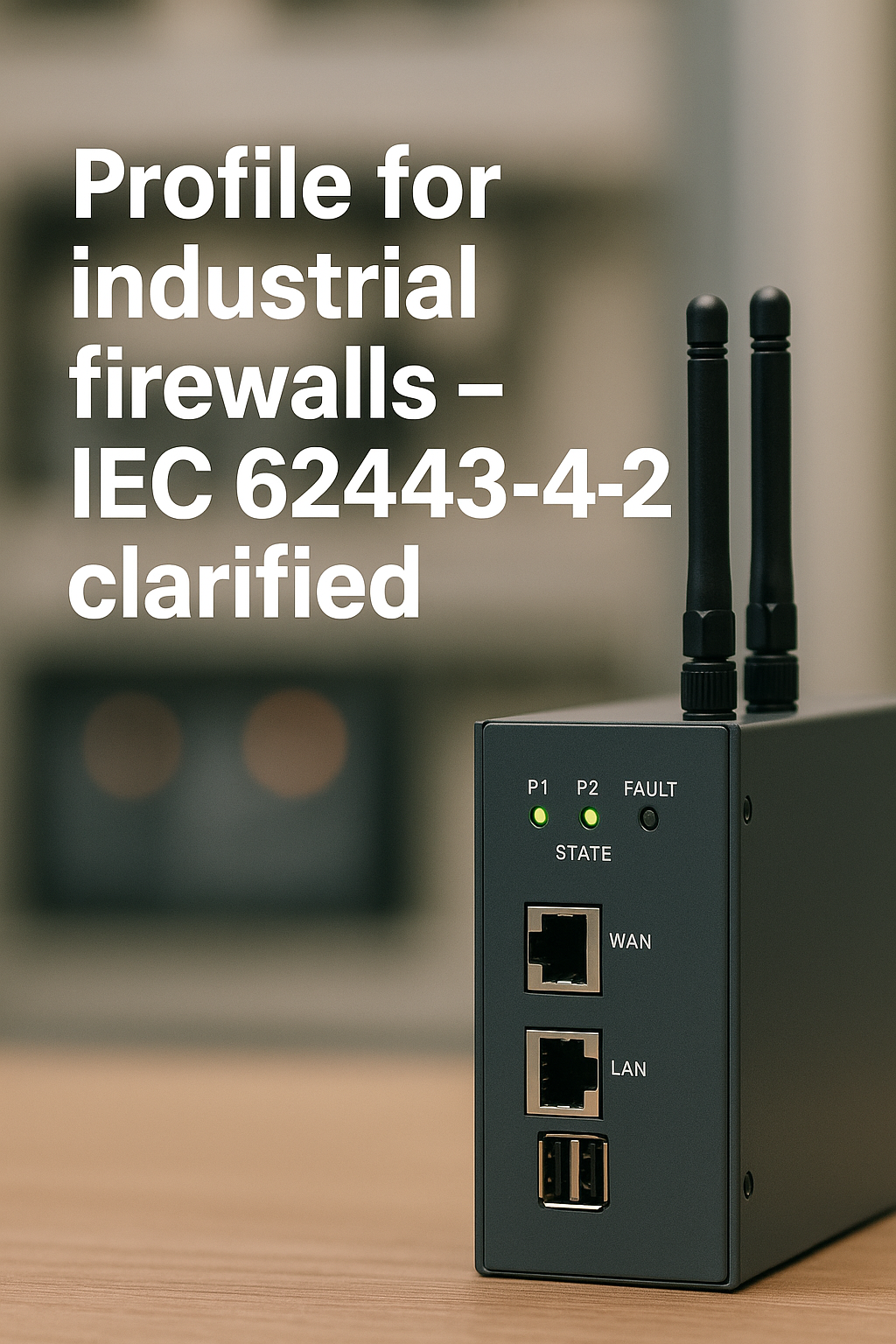An end to divergent standard interpretations: the TeleTrusT Industrial Firewall Profile clarifies IEC 62443-4-2 to enable consistent assessments. A methodological template for other product categories.
Clarifying security requirements creates a uniform assessment basis
The Bundesverband IT-Sicherheit e.V. (TeleTrusT) has revised its Industrial Firewall Profile and published it as a proposal for the upcoming IEC 62443-5 series. The document operationalizes the abstract requirements of IEC 62443-4-2 for industrial firewalls with router functionality and thus establishes a uniform basis for the development, testing, and certification of these critical security components.
Normative challenges in industrial cybersecurity
The IEC 62443 series is establishing itself as the central set of standards for cybersecurity in industrial automation systems. Part 4-2 defines technical security requirements for IACS components but, due to its generic approach, leaves many areas open to interpretation. The component types defined there do not reach the level of specification needed for consistent conformity assessments.
This level of abstraction leads to divergent interpretations of identical standard requirements by different stakeholders. Testing bodies, manufacturers, and system integrators may assess the same security requirements differently, which significantly affects the comparability of products and certificates and creates uncertainty in procurement decisions.
Systematic operationalization of the standard’s requirements
The TeleTrusT Industrial Firewall Profile addresses this problem through a methodical detailing of the IEC 62443-4-2 requirements. It specifies industrial firewalls for use in OT networks according to the zones-and-conduits concept and defines precise acceptance criteria for Security Levels 2 and 3.
The work includes a complete elaboration of all seven Foundational Requirements with context-specific interpretations. It not only defines the applicable Component Requirements but also explains their implementation in the specific context of industrial firewalls. The profile takes into account typical deployment scenarios, identifies potential risks, and defines corresponding protective measures.
Transfer potential for other product categories and application domains
The methodological approach of the TeleTrusT profile can be transferred to other product categories and industries. Manufacturers of control components, sensors, drive systems, or other industrial components can develop similar profiles that reflect their specific technical characteristics and operating conditions.
Different industry sectors with varying regulatory frameworks could benefit from specialized profiles. The pharmaceutical industry with its validation requirements, the energy sector with critical infrastructure demands, or automotive manufacturing with its specific production processes and quality standards each have different security priorities and threat scenarios that could be systematically addressed by dedicated profiles.
Regulatory relevance in the context of the Cyber Resilience Act
The TeleTrusT profile gains particular relevance through the Cyber Resilience Act. This Act obliges manufacturers of products with digital elements to comply with cybersecurity requirements and recognizes the application of harmonized European standards as an important instrument for demonstrating conformity.
The profile can be taken up in the relevant standardization bodies for the development of CRA-relevant harmonized standards. Until concrete harmonized standards are available, it serves manufacturers of industrial firewalls as a practical guide. The systematic concretization of security requirements facilitates both the development of compliant products and their evaluation, and it offers a structured implementation basis especially to small and medium-sized enterprises that lack dedicated standardization expertise.
Conformity with the IEC 62443-1-5 profile schema
The document consistently follows the specifications of IEC TS 62443-1-5, which defines the normative schema for IEC 62443 security profiles. This technical specification establishes nine profile requirements that range from content structure and requirement selection to risk assessment and validation.
The TeleTrusT profile meets all criteria defined in IEC 62443-1-5 and can serve as a reference implementation for future profiles. Consistent adherence to the schema requirements ensures seamless integration into the overarching IEC 62443 standards system and enables the systematic combination of different profiles into coherent security architectures.
Impact on conformity assessment and market dynamics
The concretization creates a uniform and objective evaluation basis for industrial firewalls. Testing bodies receive standardized and reproducible assessment criteria, which significantly improves the consistency and comparability of certifications. Users can objectively evaluate different products based on uniform security criteria and gain a more reliable basis for procurement decisions.
This standardization also has a lasting impact on market dynamics. Manufacturers can align their development processes with clearly defined and uniform requirements, leading to greater planning security and more efficient development cycles. At the same time, fairer competitive conditions arise because all market participants are assessed according to identical criteria and attention shifts from interpreting standards to the quality of technical implementation.
Outlook and strategic significance
The TeleTrusT Industrial Firewall Profile will be submitted as an official proposal for an IEC 62443-5 profile to the IEC and is available free of charge on the TeleTrusT website.
The established methodology for systematically concretizing abstract security standards can serve as a blueprint for other product categories. Profiles like this can be used both as input in standardization committees for CRA-relevant harmonized standards and as practical guidance until concrete standards become available.
Systematically closing the interpretation gap between abstract standard requirements and practical implementation will become a decisive success factor for manufacturers, testing bodies, and users in an increasingly regulated environment.

